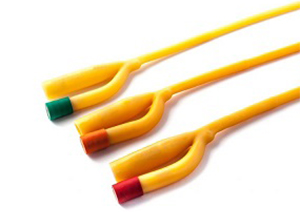
What is a Urinary Catheter?
A urinary catheter is a silicone or plastic tube used to allow drainage of urine through the bladder. They are most commonly placed through the urethra, but some patients have an alternative passage surgically created such as a suprapubic tube.
Why might I need a Urinary Catheter?
Some patients are unable to empty their bladder through normal urination. For patients who are unable to drain their bladder normally and cannot perform self-catheterization on a regular basis, a urinary catheter may be the most reasonable option for them. Urinary catheter can remain in for long periods of time, but do require maintenance.
Catheters may also be used prior to a surgical treatment, such as a TURP, that is expected to restore the ability to urinate.
Catheters are used for short periods of time after many procedures, but typically do not require replacement.
How often should a catheter be changed?
Catheters should be changed on a monthly basis. This can happen at home with a visiting nurse service, or in the doctors office.
What are the risks of long-term catheterization?
The greatest risk of using a urinary catheter for a long period of time is infection of the urinary tract. Signs of infection include painful spasms, leakage of urine, new blood in urine, and fever. Foul odor and cloudy urine are not reliable signs of infection. If you have an infection, you may require antibiotics and a change of your catheter. Other risks include erosion, bleeding, and with very long use, changes to the bladder that may increase risk of cancer of the bladder.
